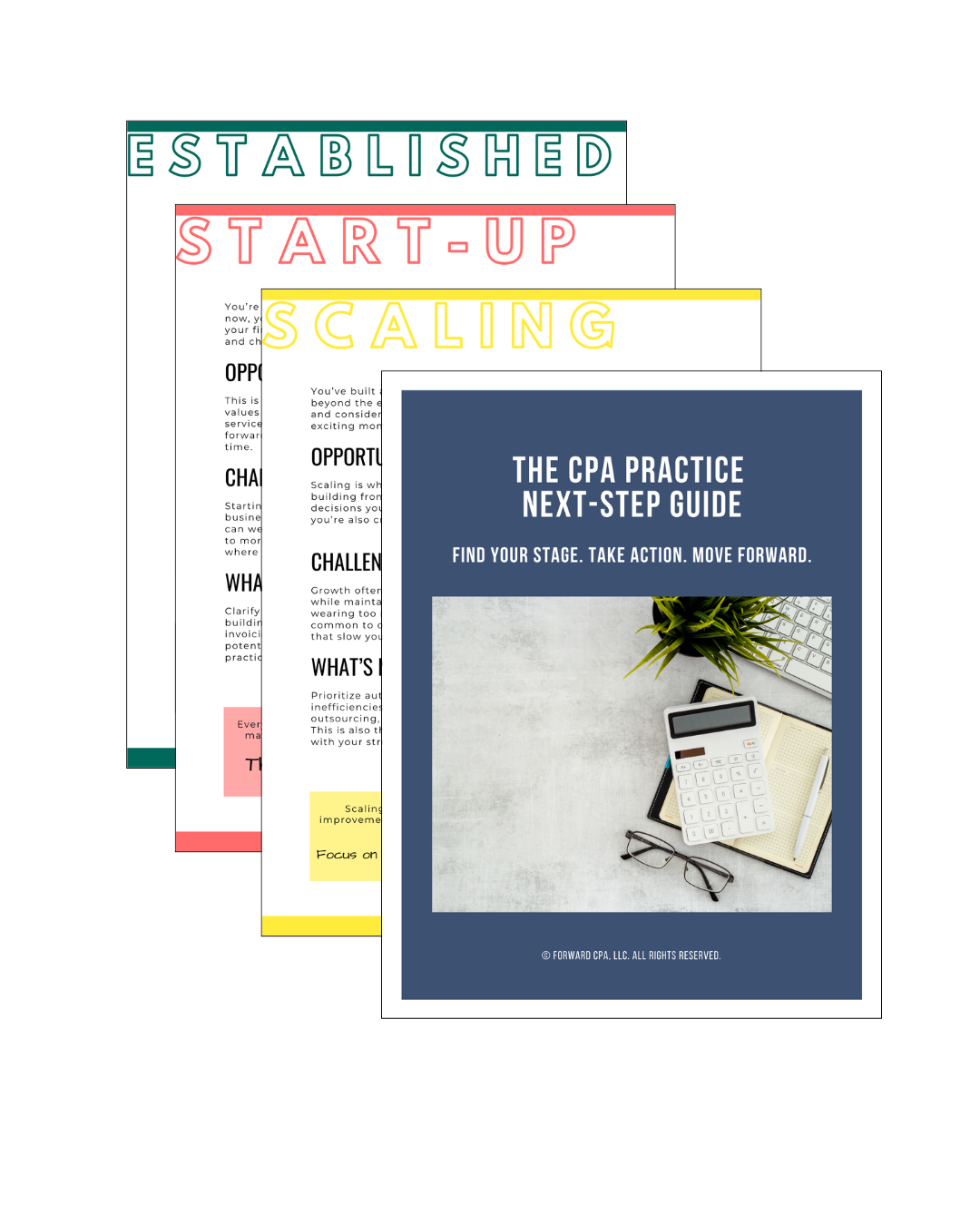How to Train a New Hire Without Losing Your Mind
Apr 08, 2025
Hiring someone for your CPA firm is exciting - until you realize that onboarding them might take more time than just doing the work yourself.
Sound familiar?
Training a new hire can feel like a full-time job on top of your actual full-time job. But with the right systems and mindset, you can bring new team members up to speed without burning out (or repeating yourself 17 times).
Here's how to train a new hire without losing your mind - so you can build a stronger team and finally get the help you need.
#1 Start with Systems, Not Just Skills
Before you focus on teaching software or processes, make sure you've built the systems your new hire will follow. The clearer your workflows, the easier they'll be to learn.
Try This:
- Document your step-by-step processes for things like month-end closes, audit prep, or client onboarding.
- Create checklists for recurring tasks.
- Use a project management tool (like ClickUp, Asana, or Jetpack Workflow) to assign and track tasks.
Pro Tip: Don't wait until you hire to build your systems. Start documenting as you go, even before you bring someone on.
#2 Record Yourself Doing Key Tasks
Instead of explaining the same thing over and over, use screen recording tools like Look or Snagit to create short training videos. Your future self will thank you.
Examples of What to Record:
- How to reconcile a bank account in QuickBooks
- Where to find client files and how to organize them
- How to complete your firm's monthly close checklist
Pro Tip: Keep each video short (under 5 minutes) and name them clearly in a shared folder.
#3 Build a Mini Onboarding Guide
You don't need a 100-page employee handbook - but a simple onboarding guide can go a long way in setting expectations and reducing hand-holding.
Include Sections Like:
- Tools and login info
- Weekly meeting schedule
- How to ask for help (and who to go to)
- Links to SOPs, videos, and templates
Pro Tip: Store it in a Google Doc or Notion page you can update easily and reuse with future hires.
#4 Assign Real Work in Week One (With Guardrails)
It's tempting to hold off on "real" work until your new hire is fully trained - but that often leads to overwhelm later. Instead, give them hands-on tasks early with a clear process and support.
Start with something low-risk but meaningful, like:
- Reviewing a prior-year workpaper and preparing a draft
- Drafting an email or prepping a client checklist
- Entering transactions under your guidance
Pro Tip: Let them try, then review together. Feedback is where the real learning happens.
#5 Use a 30-60-90 Day Plan
Don't expect someone to become a top performer in the first week. A 30-60-90 plan gives structure and shows what success looks like over time.
What to Include:
- 30 days: Learn systems, complete training, shadow key tasks
- 60 days: Handle simple tasks independently, join client calls
- 90 days: Manage recurring work with minimal oversight
Pro Tip: Review progress every 2 weeks to adjust and support where needed.
#6 Protect Your Time During Onboarding
Training someone doesn't mean being available 24/7. Instead, batch your check-ins, set expectations, and direct them to resources when possible.
Try This:
- Set office hours or a daily check-in window
- Encourage questions - but also encourage them to look in your onboarding guide or video library first
- Use async communication (like Look or email) instead of constant Zoom calls
Pro Tip: Remind yourself - training takes time now so you can get time back later.
#7 Give Feedback Early and Often
New hires want to know how they're doing. And it's better to catch misunderstandings early than fix them after a deadline passes. Don't wait for a formal review - make feedback part of your daily rhythm.
Try This:
- Use "feedback sandwich" style: praise → correction → encouragement
- Focus on specifics, not just "good job" or "this isn't working"
- Celebrate wins, even small ones - building confidence builds momentum
Training Is an Investment, Not a Distraction
Yes, training takes time. But it's also the first step toward getting your time back.
When you slow down enough to onboard someone well, you create a team that can actually support your growth, not just keep you afloat.
Train intentionally, document as you go, and let go of perfection. You don't need a corporate training manual - just a clear process, a little patience, and the belief that it's okay to build as you go.
You've got this.
Your Next Step Forward
Join the newsletter designed to help CPAs take the next best step in building a practice they love, with practical insights, game-changing tools, and quick wins in every email.
We hate SPAM. We will never sell your information, for any reason.




